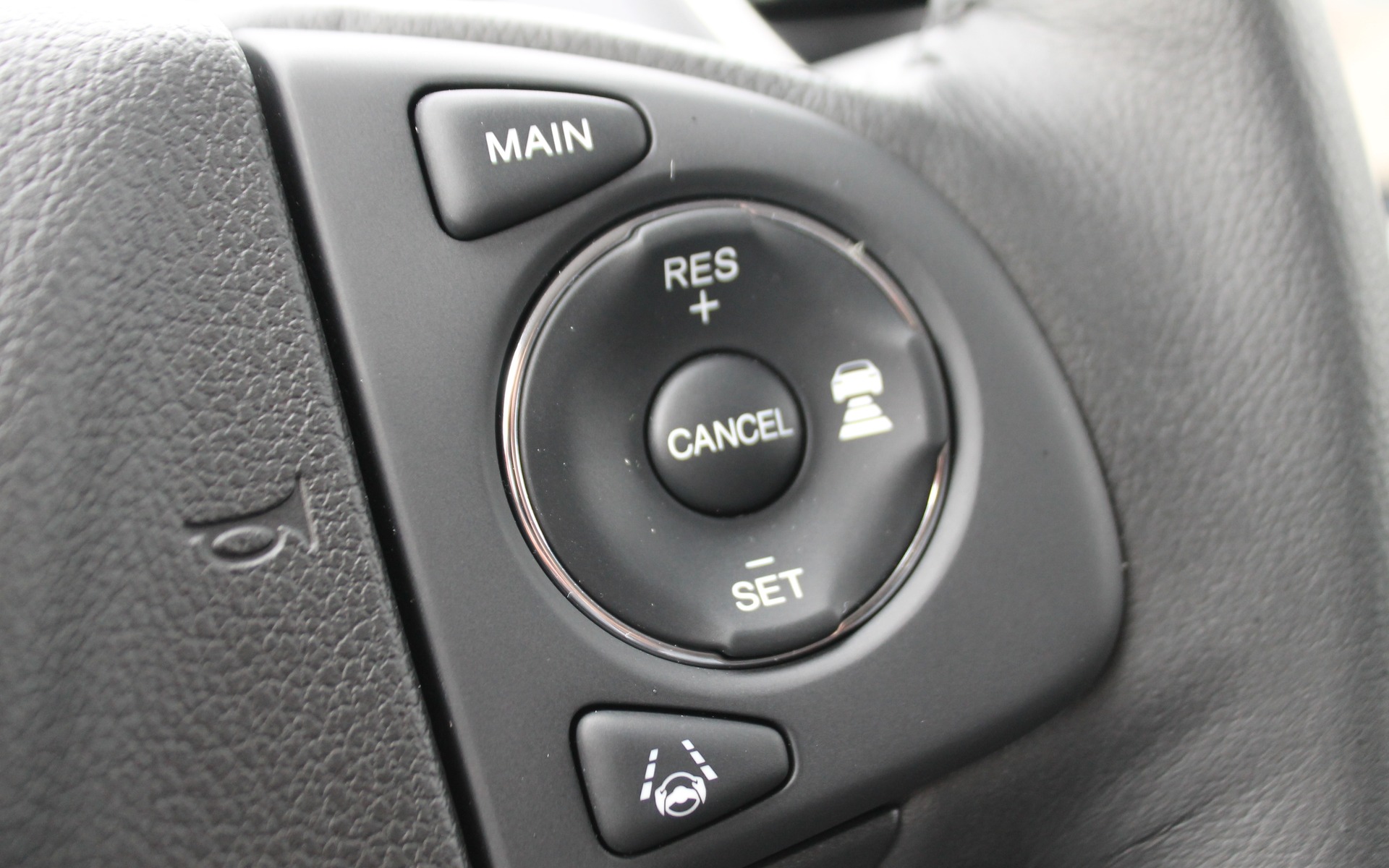Table Of Content

Cruise control (also known as speed control, cruise command, autocruise, or tempomat) is a system that automatically controls the speed of an automobile. The system is a servomechanism that takes over the car's throttle to maintain a steady speed set by the driver. The cruise control system actually has a lot of functions other than controlling the speed of your car. For instance, the cruise control pictured below can accelerate or decelerate the car by 1 mph with the tap of a button.
Cost Effective Cars
Rapid acceleration and deceleration, on the other hand, can lead to increased fuel consumption. This step will vary widely based on your vehicle make and model, however, many cruise control settings are accessible from the steering wheel controls. As you can see, the total input traction force is adjusted function of the road gradient. The feedforward component manages to compensate partially the road gradient change but not completely. After the road gradient return to zero, the feedforward force becomes 0 and the total traction force is returning to nominal value, 300 N.
Open loop (feedforward) control system
The system uses a forward-facing camera and sensors to detect the speed and distance of the vehicle in front of the driver. If the vehicle ahead slows down or speeds up, ICC automatically adjusts the speed of the driver’s car to maintain a safe following distance. Unlike regular speed control, ICC can also bring the car to a complete stop and resume driving when the vehicle ahead starts moving again. Cruise control is best suited for long drives on large, straight roads such as an interstate highway with cars traveling at a relatively constant speed.
Limitations of Cruise Control
Driving on long stretches of highway can be tiring, especially when trying to maintain a constant speed. Cruise control alleviates this by allowing drivers to set and maintain a desired speed without continuous use of the accelerator pedal. Understanding how cruise control functions can help drivers make the most of this convenient feature. It allows cars to talk to each other, coordinating their speeds to maintain a safe distance. It's like having a well-coordinated team of cars all working together to make the traffic flow smoother and reduce congestion.
Car Ratings Car Shopping Guides What is Audi Adaptive Cruise Assist? - J.D. Power
Car Ratings Car Shopping Guides What is Audi Adaptive Cruise Assist?.
Posted: Mon, 11 May 2020 07:00:00 GMT [source]
If that's a bit out of date, your fortune-telling cruise control might not be so accurate. It's usually found in more high-end vehicles where top-notch fuel efficiency is a focus for the engineers. The steering-wheel controls for some systems have buttons or toggles with labels like “Accel” and “Decel,” while others simply use up-and-down arrows to signify a button’s function. We recommend consulting your car’s owner’s manual to decode the cruise control buttons and their operation for your specific vehicle.
When cruise control is activated, the driver sets a desired speed for the car to maintain. The car’s engine and transmission work together to maintain that speed without any input from the driver. To activate cruise control, the driver typically presses a “Set” button or engages a switch on the steering wheel or dashboard.

Can all cars have cruise control installed?
The cruise control system controls the speed of the car by adjusting the throttle position, so it needs sensors to tell it the speed and throttle position. It also needs to monitor the controls so it can tell what the desired speed is and when to disengage. The system constantly maintains the speed set by you (driver) irrespective of road conditions. For example, if there’s an incline ahead, cruise control adjusts the throttle accordingly to maintain the same speed. In older cars, having your cruise control engaged on a wet or icy road could allow the vehicle to accelerate or experience wheelspin when driven wheels encounter a low-traction surface. Here, the cruise control system maintains throttle pressure, even in situations where it should be released instead.
One minute you’re driving your car and everything seems fine, and the next moment you hear a strange noise coming from your car as you accelerate. First we’ll describe the forces acting on the vehicle driving on a road with gradient. In order to simulate an open loop and a closed loop control system and to analyze the behavior of the vehicle for a given input and disturbance, we’ll need to model it mathematically.
In the past 25 years, huge leaps in sophistication propelled cruise control to a point where some drivers may be confused by exactly what it is and how it works. Here, we will clear up any confusion about its functions, benefits, and limitations to help you on your car buying journey. Cruise control has come a long way since first invented and patented by Ralph Teetor in 1950, who originally named it the “Speedostat”. Chrysler Corporation was the first manufacturer to offer the groundbreaking mechanism as an option on several of its luxury vehicle models nine years later. Today, cruise control is rapidly becoming the standard on all new vehicles, providing drivers with increased convenience on their daily drive.
For a given traction force of 300 N, the vehicle will cruise at a constant speed of 55 kph. In order to achieve a constant vehicle output speed, the initial condition of the integrator block is set at 15.28 m/s (55 kph). Adaptive cruise control is the more advanced version of the standard automatic cruising system.
Edit your picks to remove vehicles if you want to add different ones. Postmedia is committed to maintaining a lively but civil forum for discussion. You will receive an email if there is a reply to your comment, an update to a thread you follow or if a user you follow comments.
A radar sensor located in the front end of the car locates traffic ahead of it and locks on to the car ahead. This sensor then controls the speed of your car so that it always stays 2-3 seconds behind the car in front. While fully autonomous vehicles are still in the developmental stages, the integration of cruise control technology is a big step toward creating safer and more efficient transportation systems. Occasionally, you may encounter issues with your cruise control systems. Common problems include cruise control not engaging or disengaging unexpectedly.
Ultimately, it’s not hard to save fuel if you let your vehicle automatically maintain a constant cruising speed. Another major benefit of using cruise control is that you will experience greater fuel efficiency. Your vehicle will use far less fuel if you drive at a constant speed rather than accelerate on each section of the open road. One of the main advantages of using cruise control is improved fuel efficiency. By maintaining a constant speed, cruise control helps reduce fuel consumption, leading to better gas mileage.
The interior of the car has altimeters, gyroscopes and a tachometer to produce even finer measurements on the car’s position. All these sensors act perfectly in unison and obtain accurate data of the car’s location, thus providing additional safety. The purpose of a cruise control system is to accurately maintain a speed set by the driver without any outside intervention by controlling the throttle-accelerator pedal linkage. While cruise control is a convenient feature for modern drivers, it is not perfect for all circumstances.
While knowing how to use cruise control can reduce leg fatigue, it can require more mental concentration. The car will maintain speed even if road conditions change, so you must carefully pay attention to the road and traffic. When you’re using your car’s cruise control feature, don’t forget your defensive driving skills. Using cruise control can improve fuel efficiency by helping drivers maintain a consistent speed and reduce unnecessary acceleration. It can also reduce driver fatigue during long drives by allowing them to rest their feet. Instead, a computer linked to various sensors and throttle controllers controls the function via a wireless system.
Justin Pritchard is an experienced motoring expert whose work is read and watched by Canadians across the country on a weekly basis. Below, we’ll answer some of the most popular Internet search questions about cruise control, so you can make the best use of this important system. It can be especially helpful in today’s driving climate as average-speed cameras are becoming increasingly common. If you want to return to your previously programmed speed, just press ‘resume’. One stop place for car electronics reviews, industry trends, news and tips.

No comments:
Post a Comment